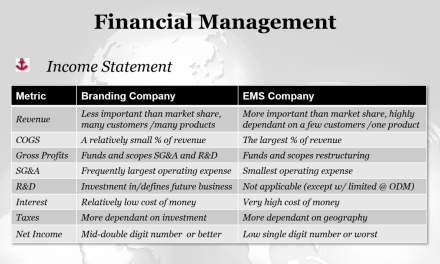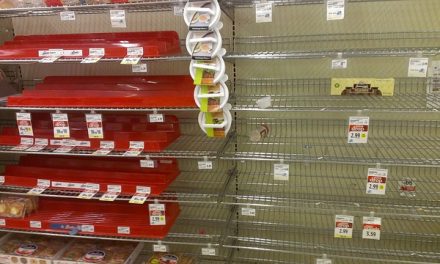The Outlook for the Electronic Component Supply Chain in 2021
By Michael Knight, President, TTI Semiconductor Group
Originally published on LinkedIn

Michael Knight
From humble beginnings in the 1920’s when radios were the killer app and vacuum tubes were the killer electronic component, to 100 years in the future where there are numerous killer apps enabled by electronic components that are exponentially smaller, faster, lower power and more integrated than a vacuum tube, the electronics industry has become a critical factor in the world. Making it all run are complex, global supply chains that turn raw materials into components that then are assembled into systems and devices. Periodically, links in these supply chains snap causing major disruption in the industry.
Last March, the global COVID19 pandemic triggered one such disruption. Throughout the year component manufacturing output became erratic as virus hotspots mushroomed around the world. And demand for components became equally erratic as electronics companies hunkered down fearing a plunge in their end customers’ demand. To make matters worse, extreme weather and on-going trade wars added to the disruption, though that news tended to get buried by the pandemic and politics related headlines.
It was a crazy year for the industry but as the dust settles on 2020, it is clear to see that the electronics industry actually fared remarkably well. Many companies actually posted year-on-year growth, the TTI Family of Companies included. Looking back, it is obvious that those market segments that were gaining momentum coming into the year stutter-stepped for a quarter and then got right back to momentum building. Those segments that were struggling were further weakened by the virus. But the former eclipsed the latter and the net result was that the electronic component industry overall was firmly in expansion mode as the final quarter of the year concluded.
Here we are, early in the first quarter of a new year with the promise of multiple pandemic-ending vaccines ahead of us and the situation in the component supply chain is as chaotic as it was in the early days of the pandemic. The industry headlines are full of news about automotive companies that are running flat out to make up for lost time and sales last year running out of critical electronic components, especially automotive related semiconductors. 5G is pushing its way into the world (at last) bringing with it a swarm of new, 5G-enabled devices like mobile phones. It all uses more components than the 4G devices and infrastructure that were a major industry driver in the prior decade. And it seems like everything electronic is in the process of being wirelessly connected to the internet in an IoT frenzy that is amplifying demand for everything from amplifiers to timing devices to sensors. This in turn is amplifying the need for servers to process and store the exponentially growing amount of data that all of this is generating. The net result for the electronic component supply chain? Lots and lots of parts are getting harder and harder to get.
Based on the industry momentum that was building, and the growing obviousness that electronics was moving into the “exponential” part of the exponential curve, in 2019 I was forecasting component shortages to arrive by the second half of 2020. COVID19 delayed that but didn’t stop it. Now, growing lead times in everything from power semis to passive components have morphed into the early stages of component allocations and price increases. I think it safe to say that in the first half of 2021 we are going to see a situation in the supply chain like that of 2018, only worse.
The allocations of 2018 were largely concentrated in the passive component sector where years of price erosion had tamped down investment in incremental manufacturing capacity. There were some momentary shortages in things like memory, but the semiconductor supply chain was pretty stable through this time. Today, semiconductors are in the thick of things and what capacity the passive suppliers added in 2018/2019 has been absorbed by a return to end market growth that, at the moment, includes some COVID-catchup work. Demand right now has been further inflated by hedge buying as customers scramble to make the switch from not worrying about product availability to worrying a lot about being able to get the parts they need to keep up with their business. To make matters worse, the availability of many raw materials is going down as their price goes up.
This situation is likely to worsen during the first half of this year. Additional manufacturing capacity takes time to bring online and what is in the works won’t help alleviate pressure until at least some time in the second half. In some cases, what is scarce right now are parts made with what have become legacy technologies, like 8-inch wafers and process node geometries that hark back to the early 2000’s. These are unlikely to receive much cap-ex funding in light of growing demand for the latest technologies that deliver much higher transistor densities and lower power consumptions, among other things. The bottom line is that the balance in the component supply chain is once again knocked out of balance by the weight of demand, and balance won’t return until more supply is added to the scale and/or demand is removed.
Looking out through the rest of this new decade, I believe that we are destined to see these events reoccur with growing frequency as component supply chains and business models that were built in the 1980’s and 1990’s fail to provide the kinds of visibility, redundancy and resilience necessary to support the explosion of new technologies, products and end market demand that will be the hallmark of the 2020’s. The optimist in me sees this as a high-class problem, chock-a-block with opportunity… but a problem is a problem. Until the component supply chain “modernizes”, all of us in this business are in for a very bumpy ride. In the meantime, I predict that this year is going to net solid growth rates for many of the riders as demand outweighs supply, and both units-shipped and average-selling-prices increase.












